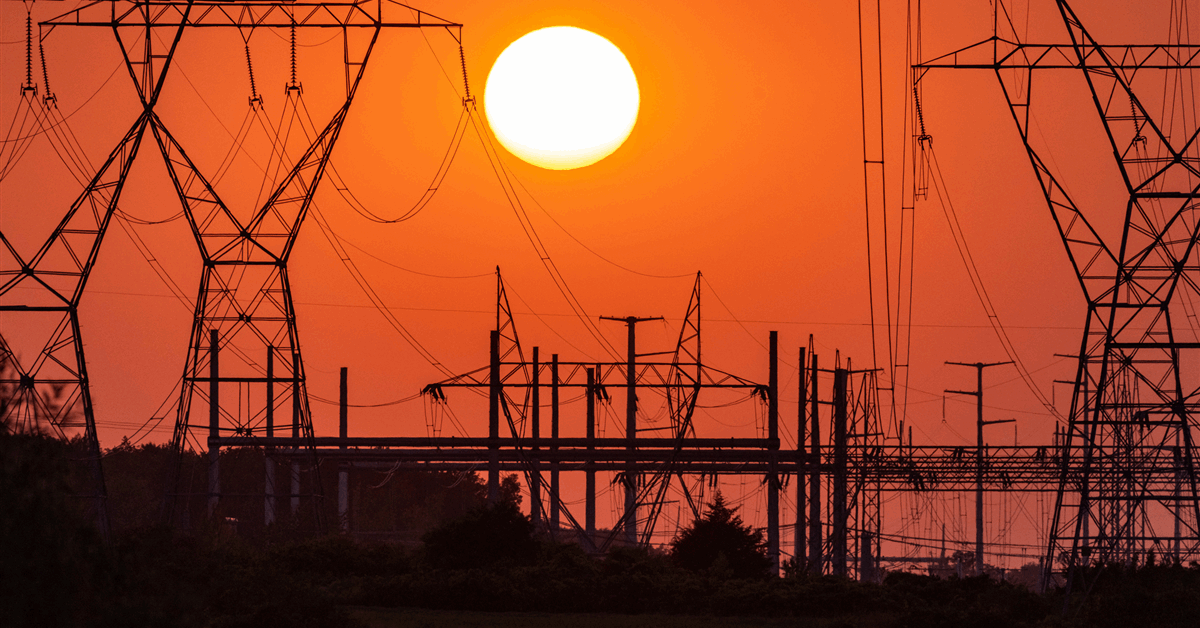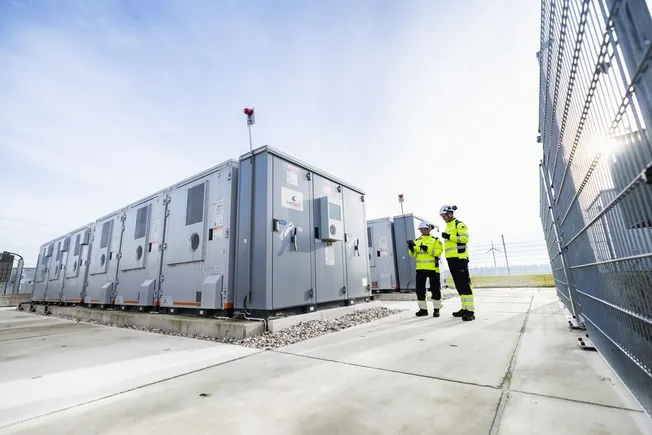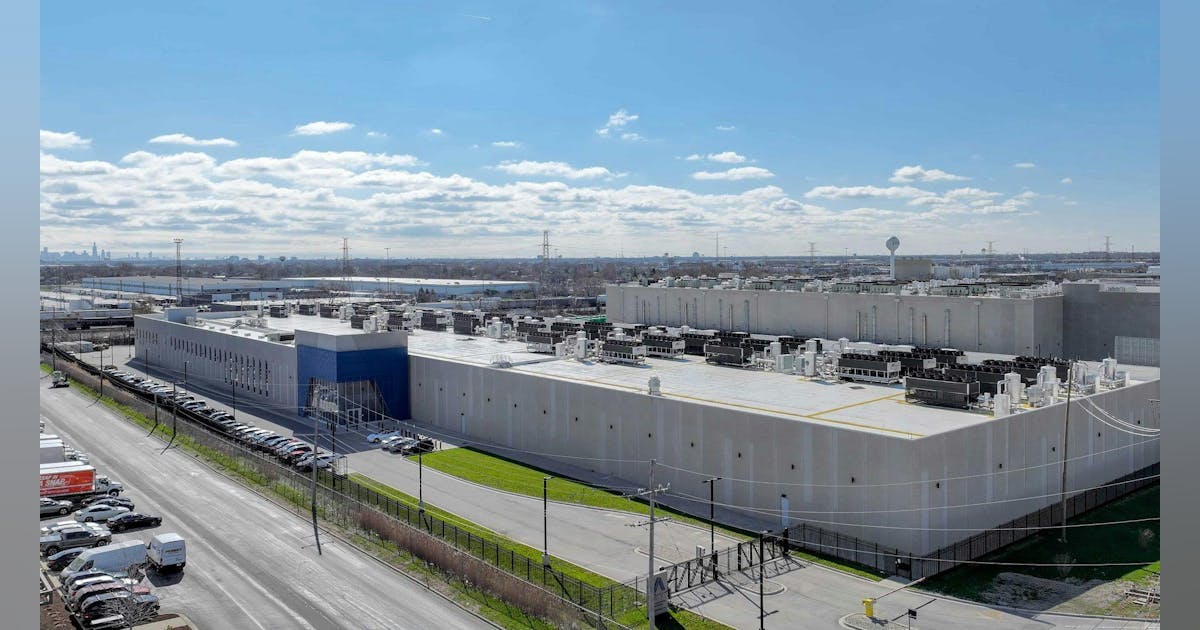Flowers play a key role in most landscapes, from urban to rural areas. There might be dandelions poking through the cracks in the pavement, wildflowers on the highway median, or poppies covering a hillside. We might notice the time of year they bloom and connect that to our changing climate. Perhaps we are familiar with their cycles: bud, bloom, wilt, seed. Yet flowers have much more to tell in their bright blooms: The very shape they take is formed by local and global climate conditions.
The form of a flower is a visual display of its climate, if you know what to look for. In a dry year, its petals’ pigmentation may change. In a warm year, the flower might grow bigger. The flower’s ultraviolet-absorbing pigment increases with higher ozone levels. As the climate changes in the future, how might flowers change?
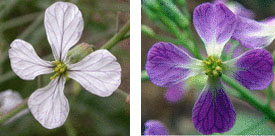
An artistic research project called Plant Futures imagines how a single species of flower might evolve in response to climate change between 2023 and 2100—and invites us to reflect on the complex, long-term impacts of our warming world. The project has created one flower for every year from 2023 to 2100. The form of each one is data-driven, based on climate projections and research into how climate influences flowers’ visual attributes.
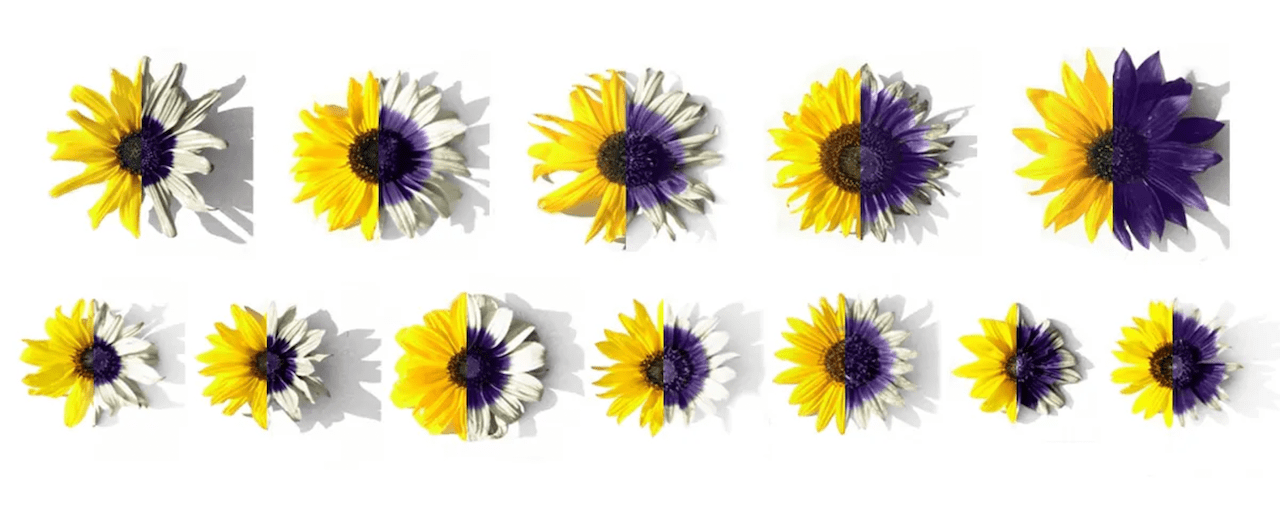
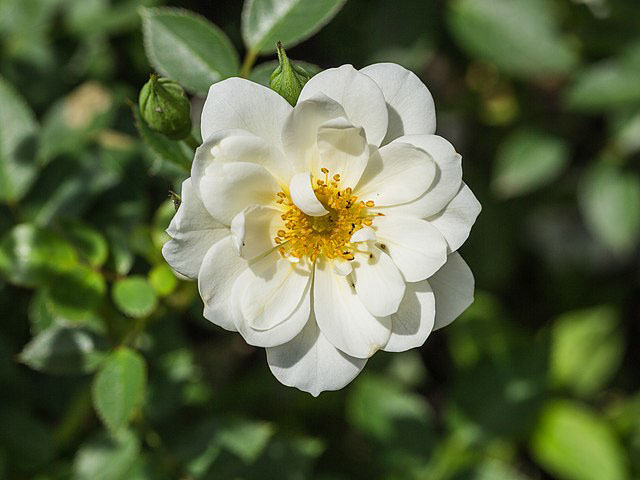
Plant Futures began during an artist residency in Helsinki, where I worked closely with the biologist Aku Korhonen to understand how climate change affected the local ecosystem. While exploring the primeval Haltiala forest, I learned of the Circaea alpina, a tiny flower that was once rare in that area but has become more common as temperatures have risen in recent years. Yet its habitat is delicate: The plant requires shade and a moist environment, and the spruce population that provides those conditions is declining in the face of new forest pathogens. I wondered: What if the Circaea alpina could survive in spite of climate uncertainty? If the dark, shaded bogs turn into bright meadows and the wet ground dries out, how might the flower adapt in order to survive? This flower’s potential became the project’s grounding point.
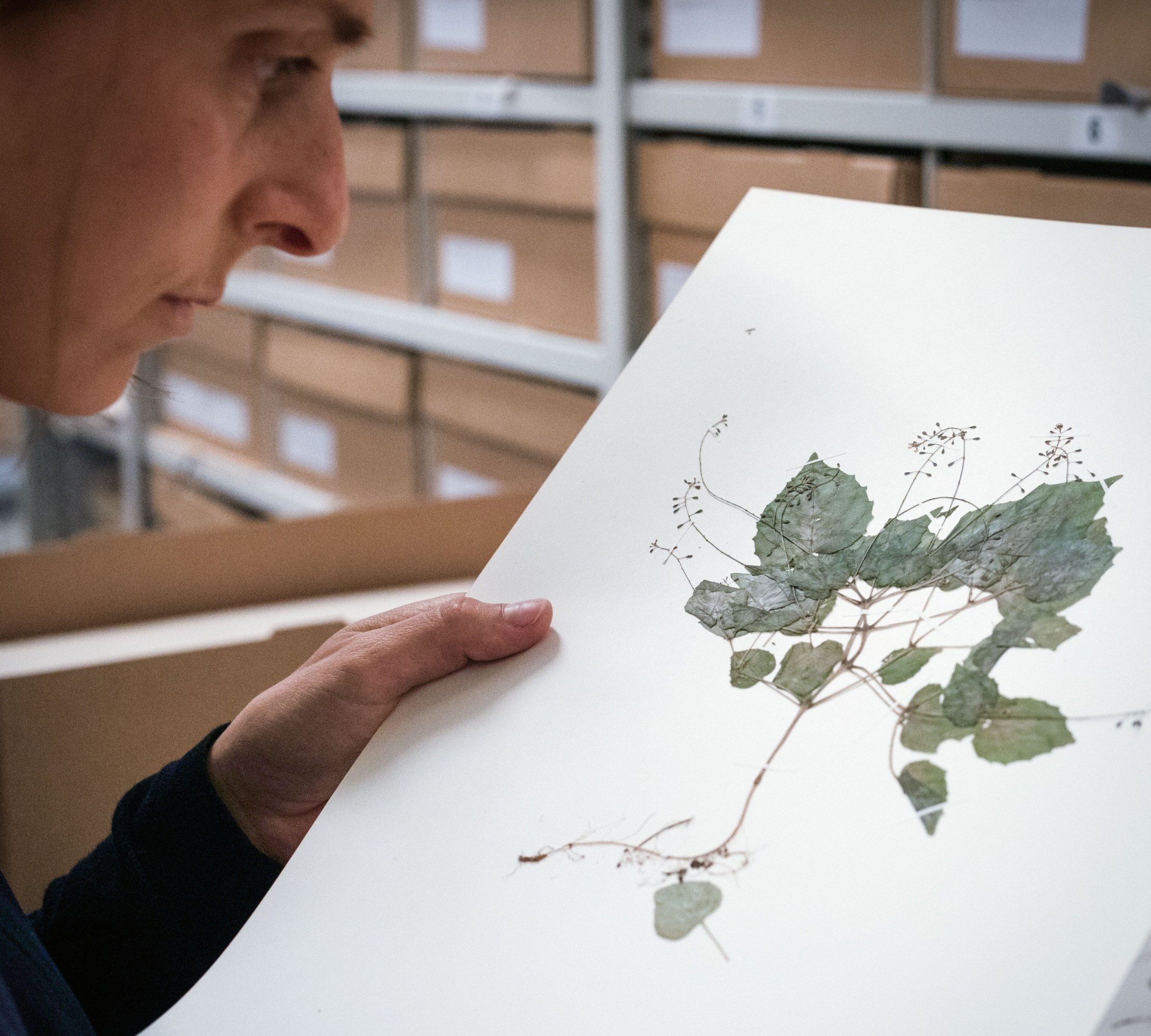
Outside the forest, I worked with botanical experts in the Luomus Botanical Collections. I studied samples of Circaea flowers from as far back as 1906, and I researched historical climate conditions in an attempt to understand how flower size and color related to a year’s temperature and precipitation patterns.
I researched how other flowering plants respond to changes to their climate conditions and wondered how the Circaea would need to adapt to thrive in a future world. If such changes happened, what would the Circaea look like in 2100?
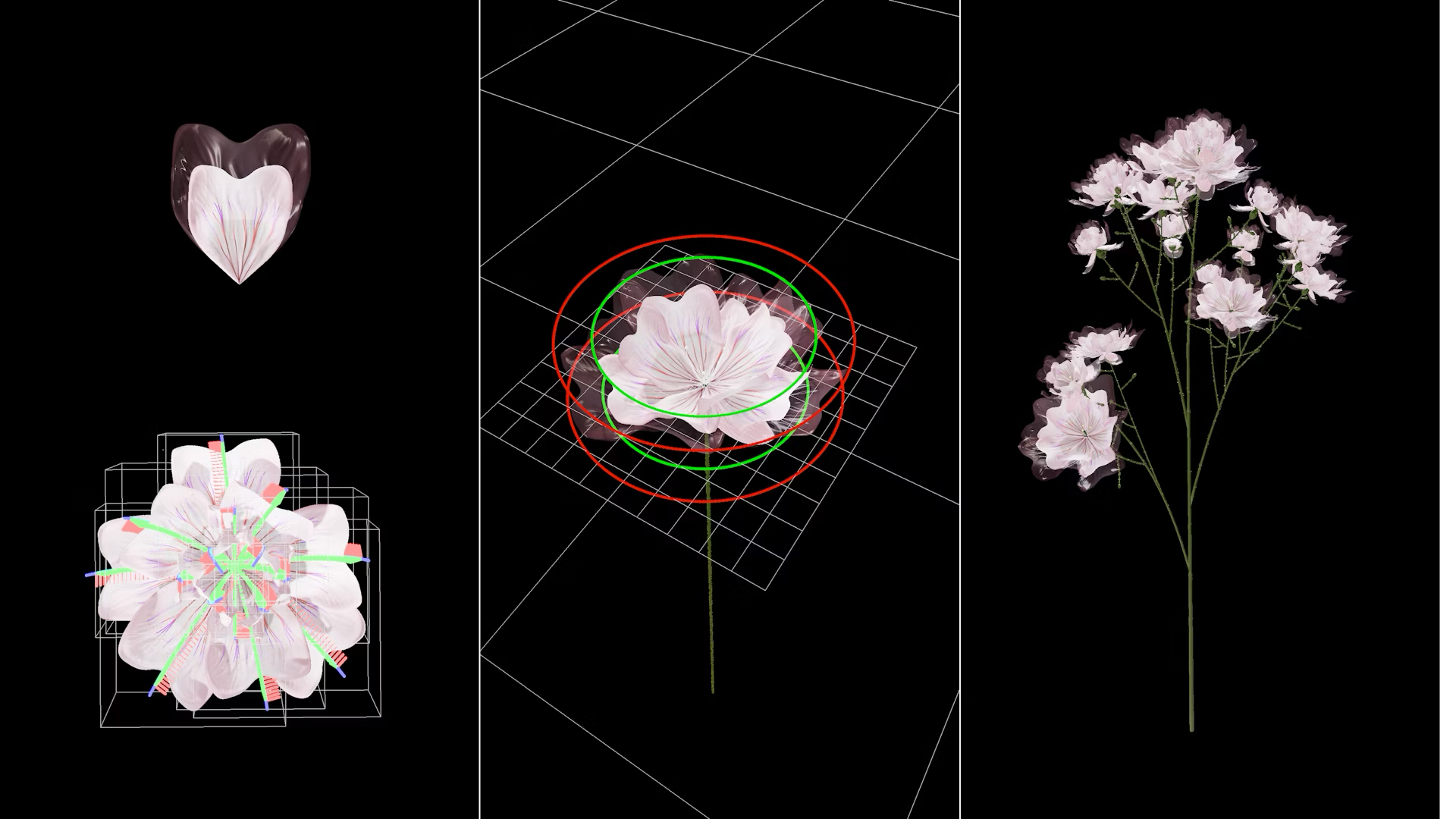
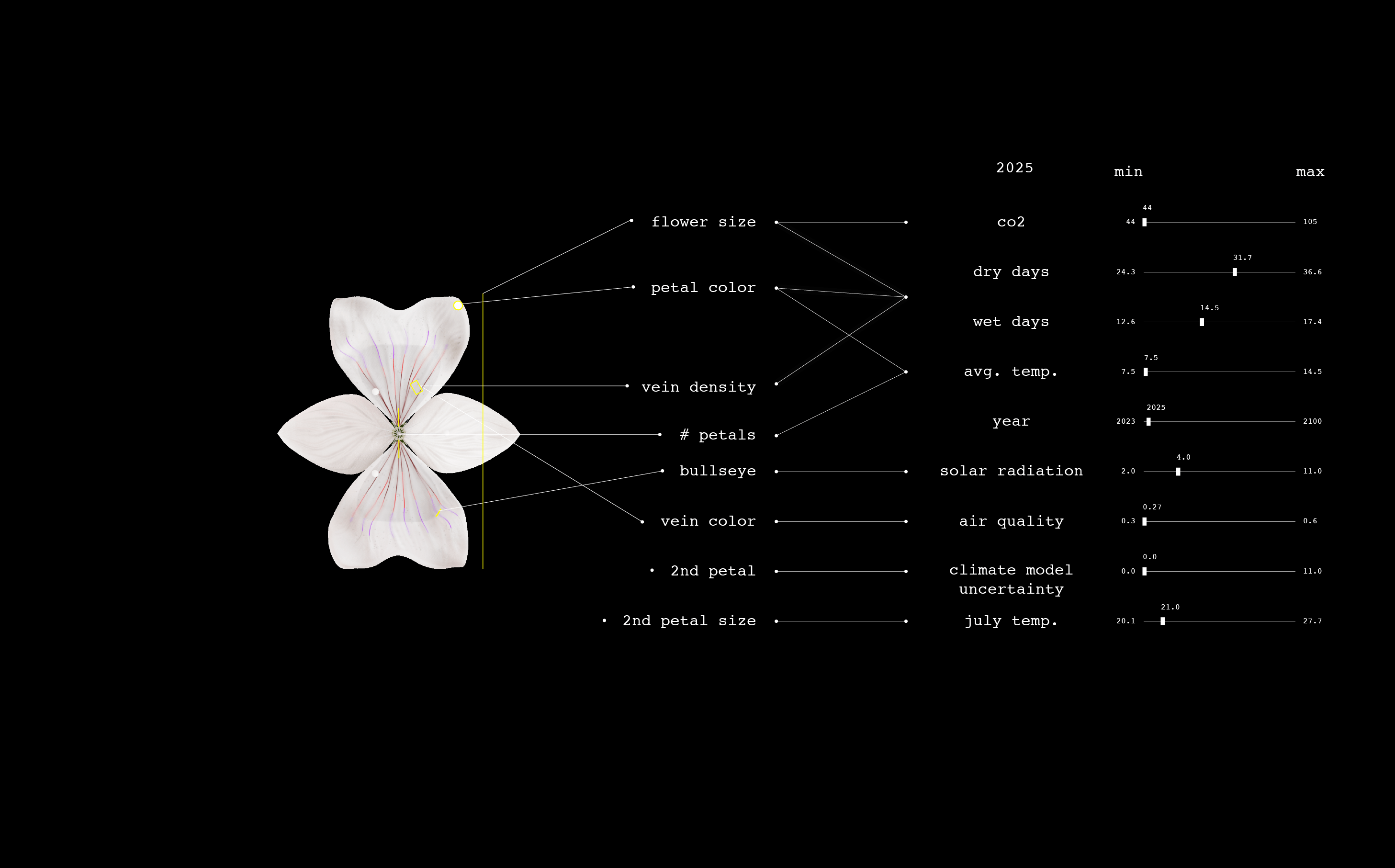
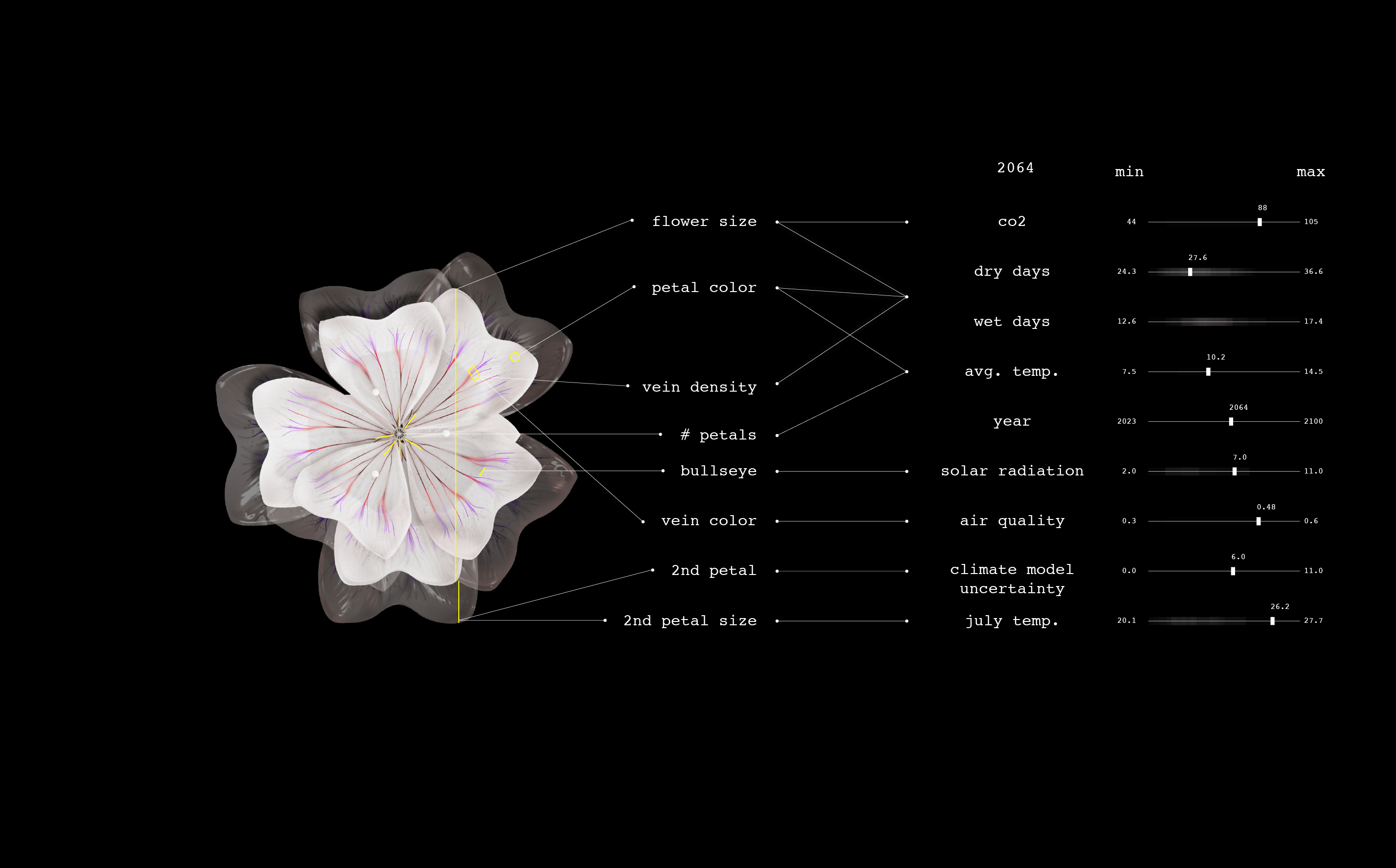
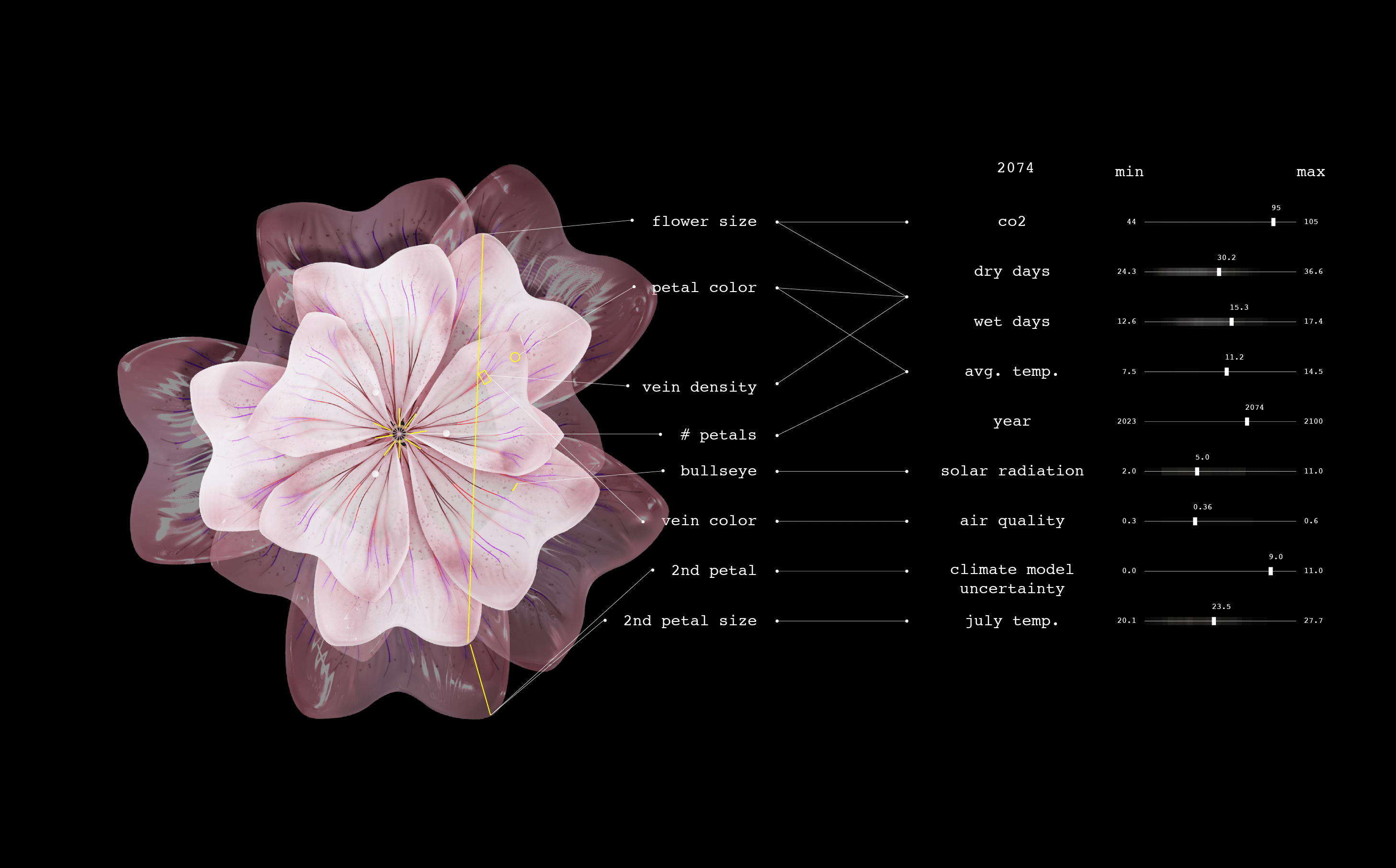
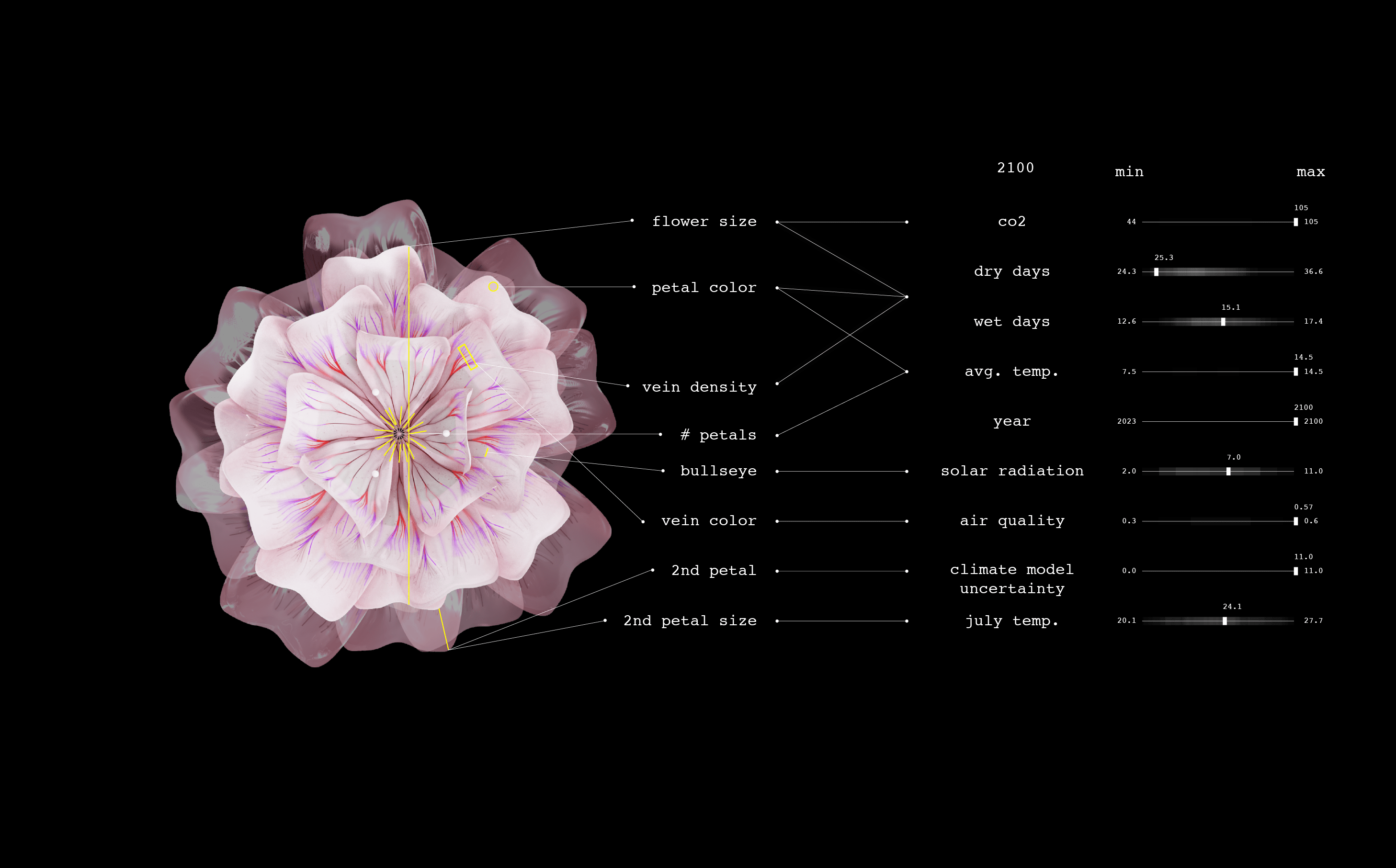
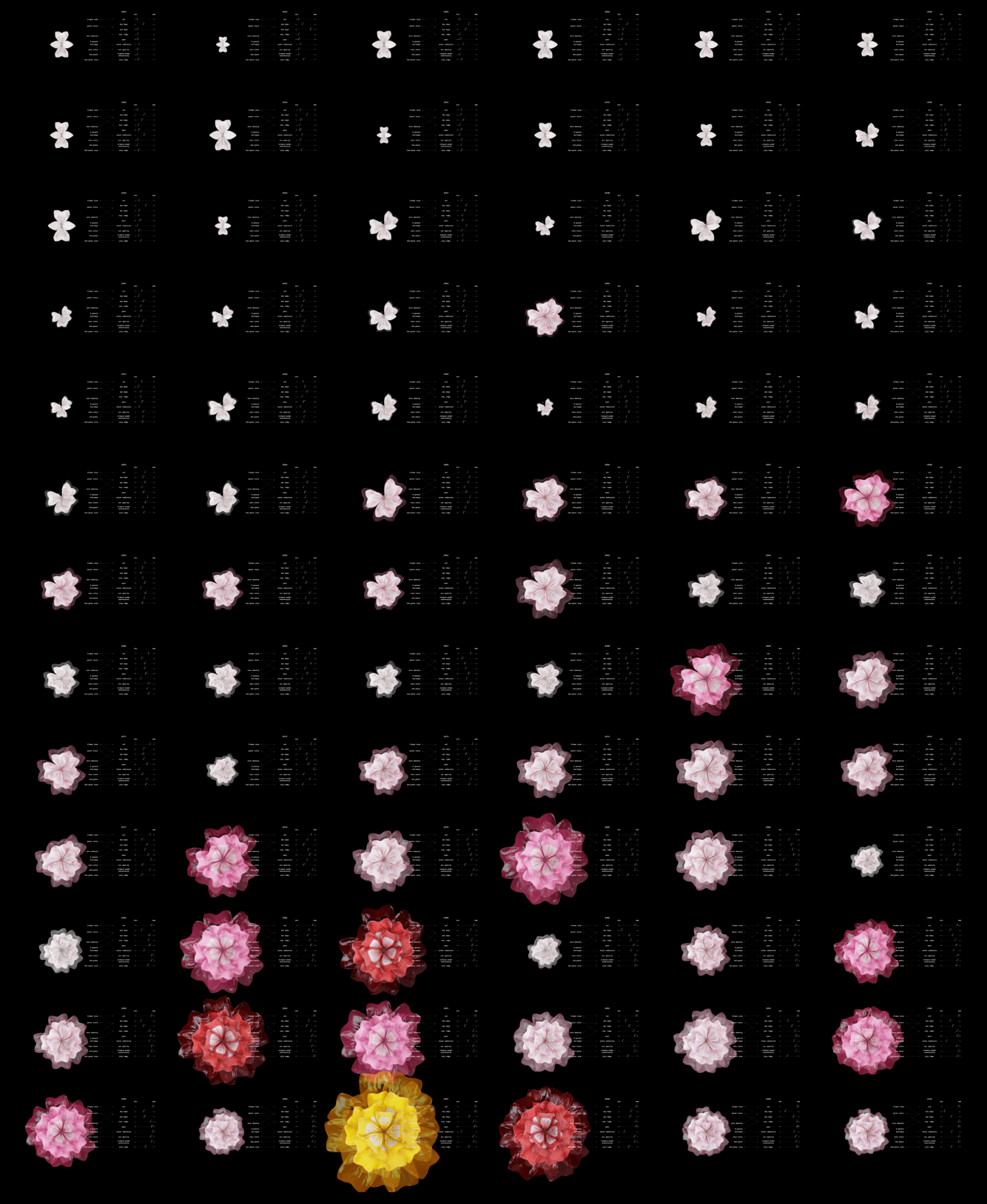
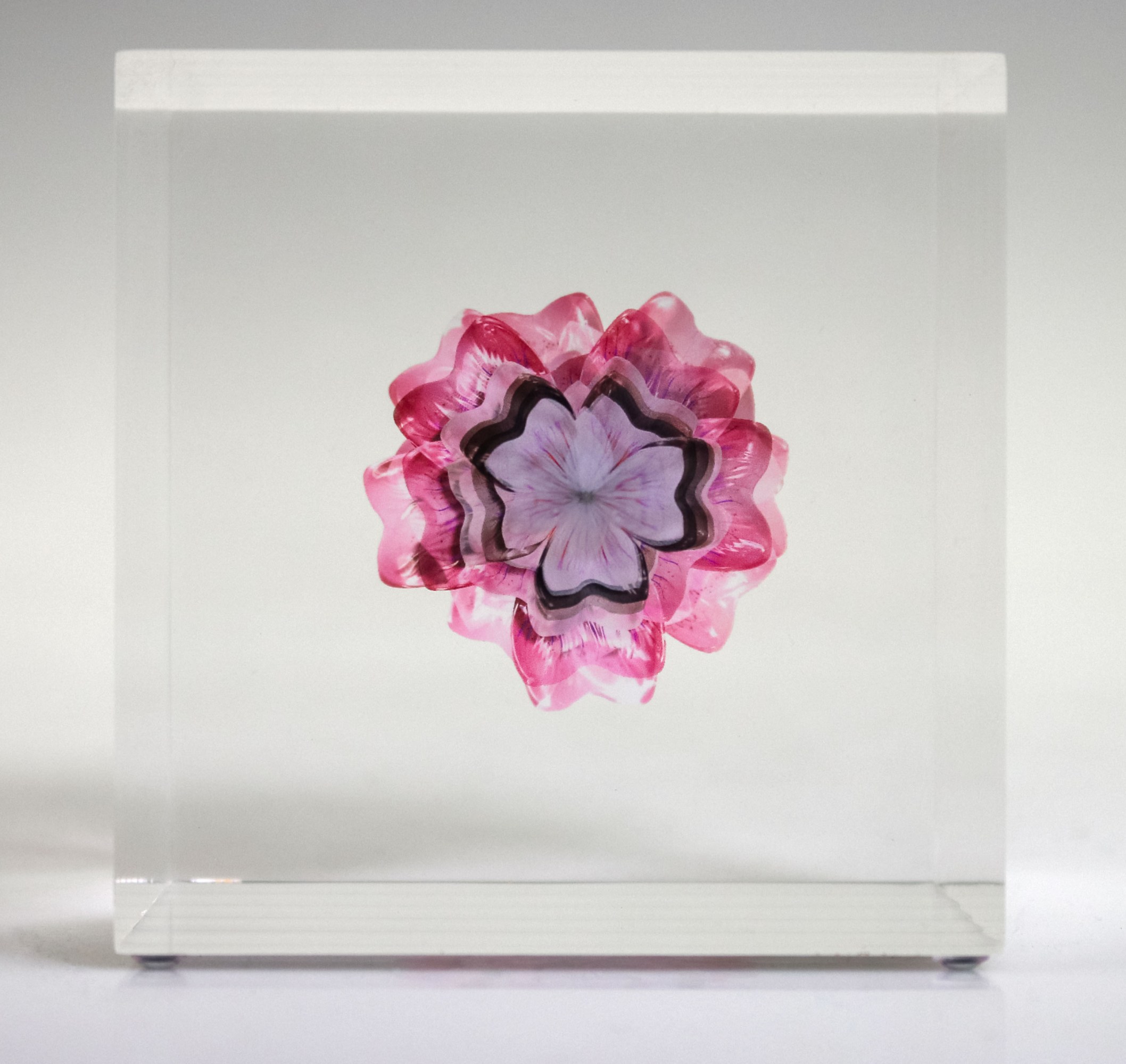
Based in Copenhagen, Annelie Berner is a designer, researcher, teacher, and artist specializing in data visualization.







